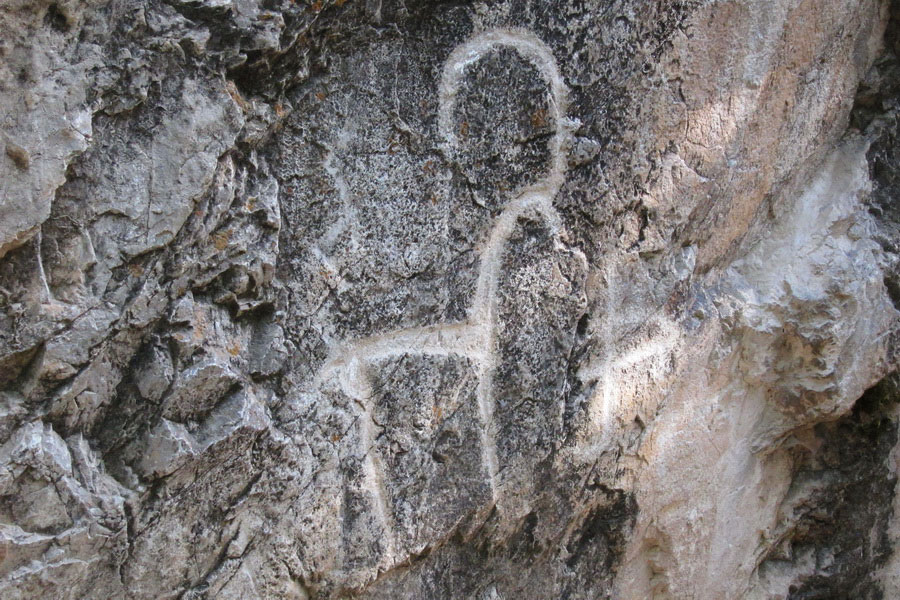Khodjikent Petroglyphs, Tashkent Region

The Khodjikent Petroglyphs in Tashkent Region are one of the most unusual historical findings near Uzbekistan’s capital. Discovered just 70 kilometers from Tashkent in Ugam-Chatkal National Park of the Tien Shan Mountains, the petroglyphs are etched along the banks of the Chirchik River near the village of Khodjikent.
The term “khoja” is a term of respect for a person descended from the prophet Muhammad who has also traveled to the holy city of Mecca. According to legend, the name of the village of Khodjikent was derived from the fact that many khojas once resided in the town. In medieval times, the town was known as Khardjanket and welcomed caravan routes along the Great Silk Road.
Archaeological findings of stone tools and rock paintings, however, indicate that the area was inhabited as far back as the Stone Age. The most spectacular of these discoveries, dated to the Eneolithic Period between the 4th-3rd millenniums BC, are now known as the Khodjikent Petroglyphs.
The Khodjikent Petroglyphs are a cluster of drawings carved on a vertical rock 12.5 meters high and 18 meters long and discovered in 1949-1950 by archaeologist H. Alpysbaev. The largest of the drawings, almost all of which depict mountain goats, reaches a height of 60 centimeters and a length of 37 centimeters. The figures are distinguished by their unity of style, despite their various sizes, and by the fact that they are all portrayed as standing motionless. Strangely, almost all of the depictions were drawn with their heads turned to the right and facing north, whereas petroglyphs typically face the south, towards the sun. The figures of three women are of particular interest, for similar drawings have not yet been found in Central Asia.
In total, more than 90 petroglyphs have been delineated, but due to the harsh climate, some have not survived to the present day. Along with the distinct drawings are less noticeable patterns, leading scientists to suggest that the petroglyphs were sketched at different times in history.
All of the figures are centralized at the bottom of the cliff near a mountain spring, which has long been considered sacred. The petroglyphs, together with the spring, draw crowds of people who come to beseech God for health, prosperity and fertility as they perform religious rituals and make wishes symbolized by pieces of fabric which are tied to nearby tree branches.
At present, the Khodjikent Petroglyphs can be found near the Chinar Teahouse. The area, far removed from its prehistoric beginnings, now boasts of a railway station, holiday cottages, sports facilities, children's camps, recreation areas and many cafes, teahouses and shops. Tourists who visit the Khodjikent Petroglyphs in Tashkent Region will appreciate the mystery bound up in these unique drawings.

